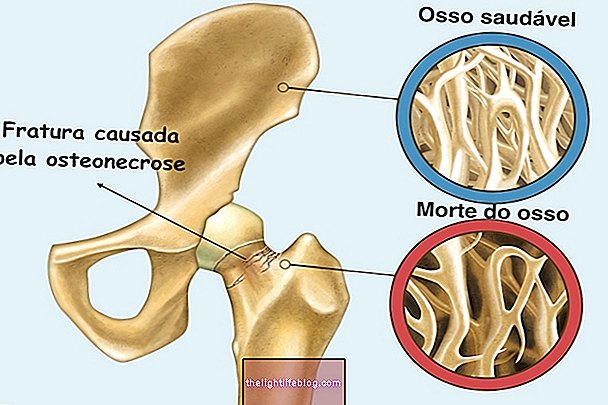Progressive supranuclear palsy, also known by the acronym PSP, is a rare neurodegenerative disease that causes the gradual death of neurons in certain areas of the brain, causing impaired motor skills and mental abilities.
It mainly affects men and people over 60 years of age, and is characterized by causing several movement disorders, such as speech disorders, inability to swallow, loss of eye movements, stiffness, falls, postural instability, as well as a picture dementia, with changes in memory, thinking and personality.
Although there is no cure, it is possible to carry out the treatment of progressive supranuclear palsy, with drugs to relieve movement limitations, as well as antipsychotics or antidepressants, for example. In addition, physical therapy, speech therapy and occupational therapy are indicated as a way to improve the patient's quality of life.

Main symptoms
Signs and symptoms that can be found in the person with progressive supranuclear palsy include:
- Balance changes;
- Difficulties in walking;
- Body stiffness;
- Frequent falls;
- Inability to pronounce the words, called dysarthria. Understand what dysarthria is and when it can arise;
- Choking and inability to swallow food, called dysphagia;
- Muscle spasms and distorted postures, which is dystonia. Check out how to identify dystonia and what causes it;
- Paralysis of eye movement, especially in the vertical direction;
- Decreased facial expressions;
- Compromise of metal abilities, with forgetfulness, slowness of thought, personality changes, difficulties in understanding and location.
The set of changes caused by progressive supranuclear palsy is similar to those presented by Parkinson's disease, which is why these diseases can often be confused. Check out how to identify the main symptoms of Parkinson's disease.
Thus, supranuclear palsy is one of the causes of "parkinsonism", also present in several other degenerative diseases of the brain, such as dementia with Lewy bodies, multiple system atrophy, Huntington's disease or intoxication by certain medications, for example.
Although the life span of a person with supranuclear palsy varies according to each case, it is known that the disease tends to become severe after about 5 to 10 years after the onset of symptoms, in which the risk of complications such as pulmonary infections or pressure ulcers on the skin
How to confirm
The diagnosis of progressive supranuclear palsy is made by the neurologist, although it can be detected by other specialists, such as a geriatrician or psychiatrist, as the signs and symptoms are confused with other degenerative diseases of age or psychiatric illnesses.
The doctor should make a careful assessment of the patient's signs and symptoms, physical examination and order tests such as laboratory tests, computed tomography of the skull or magnetic resonance imaging of the brain, which demonstrate signs of the disease and help to exclude other possible causes.
Positron emission tomography, which is an examination of nuclear radiology, using the aid of a radioactive medication, which is capable of obtaining more specific images and can demonstrate changes in brain composition and function. Find out how this exam is done and when it is indicated.
How the treatment is done
Although there is no specific treatment that can prevent or prevent the progression of the disease, the doctor may recommend treatments that help control symptoms and improve the patient's quality of life.
Medicines used to treat Parkinson's, such as Levodopa, Carbidopa, Amantadine or Seleginine, for example, despite having little effectiveness in these cases, can be useful to relieve motor symptoms. In addition, antidepressant, anxiolytic and antipsychotic medications can help treat changes in mood, anxiety and behavior.
Physiotherapy, speech therapy and occupational therapy are essential, as they minimize the effects of the disease. The personalized physiotherapy treatment is able to correct postures, deformities and changes in gait, thus delaying the need to use a wheelchair.
In addition, the reception and monitoring of family members is essential, because as the disease progresses, over the years, the patient may become more dependent on help for daily activities. Check out tips on how to care for a dependent person.
Was this information helpful?
Yes No
Your opinion is important! Write here how we can improve our text:
Any questions? Click here to be answered.
Email in which you want to receive a reply:
Check the confirmation email we sent you.
Your name:
Reason for visit:
--- Choose your reason --- DiseaseLive betterHelp another personGain knowledge
Are you a health professional?
NoMedicalPharmaceuticalsNurseNutritionistBiomedicalPhysiotherapistBeauticianOther























